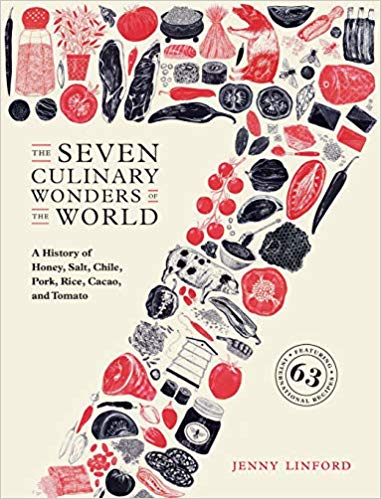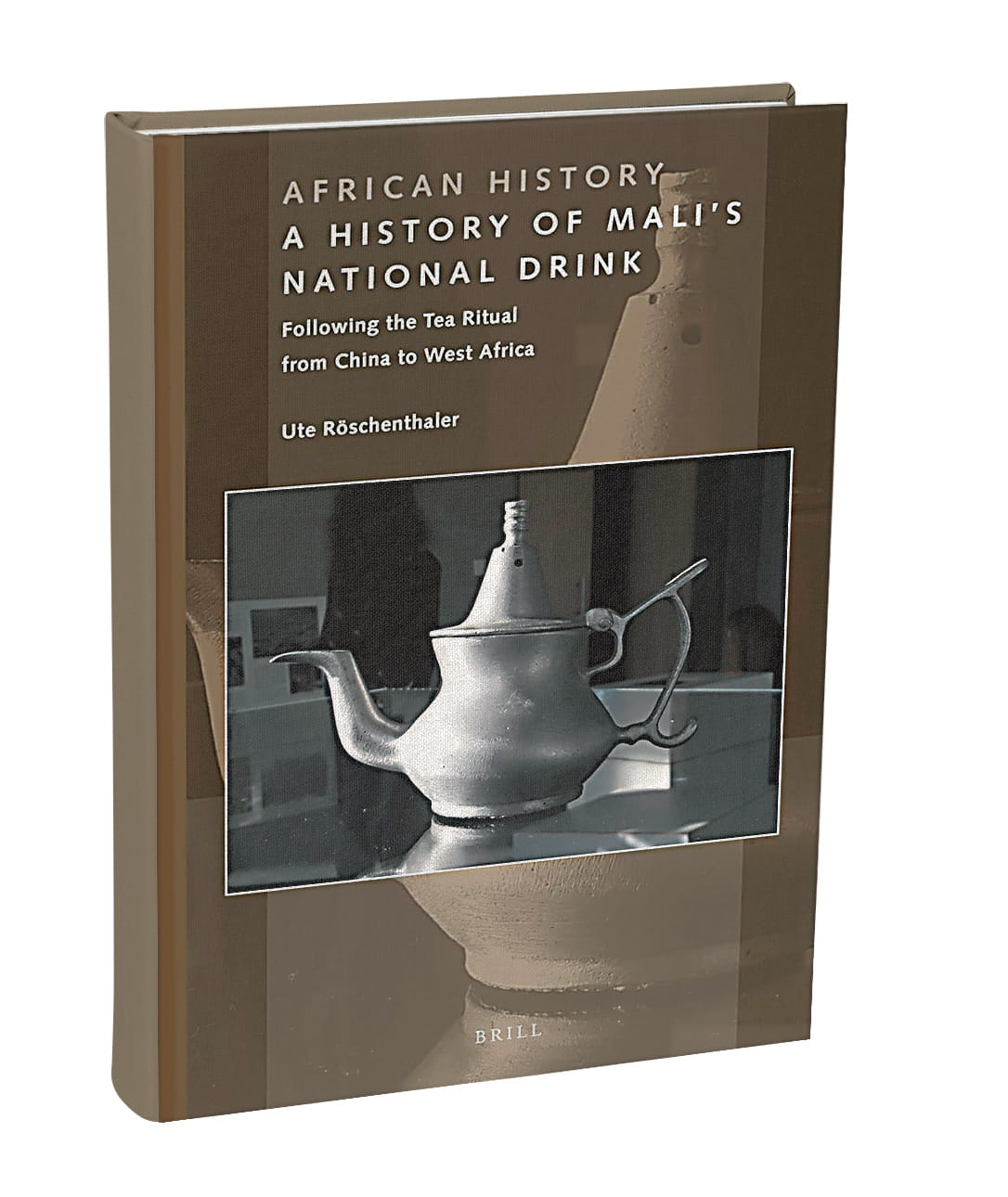
The Seven Culinary Wonders of the World: A History of Honey, Salt, Chile, Pork, Cacao, and Tomato
Tom Verde
Jenny Linford
2018, Smithsonian Books, 9-781-58834-6-421, $27.95 hb.
Humankind’s relationship with the seven ingredients so diligently and informatively explored in this cookbook is “a long one, developed over thousands of years,” to the extent that they “have acquired cultural and religious values.” With these pedigrees in mind, food writer Jenny Linford reaches back into the histories of each ingredient, advising that none should be taken for granted. Images of honey-gathering adorn caves in Valencia, Spain, occupied in prehistoric times, as well as the walls of temples in Egypt where “we come across the first records of beekeeping or apiculture.” Those same Egyptians relied on salt “medicinally to dry out and disinfect wounds.” Rice had a long journey from India and China, reaching the Middle East around 1000 BCE, and was introduced to Europe by Arabs through southern Spain. It forms the foundation of Middle Eastern mejadra (rice and lentils), one of 62 recipes in this thoughtfully curated culinary history.
You may also be interested in...

Green Tea in Mali: Culture Pours From Global Trade
In 2005, while attending a tea ceremony in Bamako, the capital of Mali, where serving tea punctuates daily life across courtyards, offices and roadside stalls, anthropologist Ute Röschenthaler realized that green tea had become more than a national drink..png?cx=0.44&cy=0.65&cw=382&ch=487.6595744680851)
Zeina Abirached’s Art Uncovers Urgency of Wisdom in Gibran’s The Prophet
Kahlil Gibran’s 1923 classic is given new life, as Abirached’s graphic novel blends Lebanese artistry with the late author’s timeless wisdom.